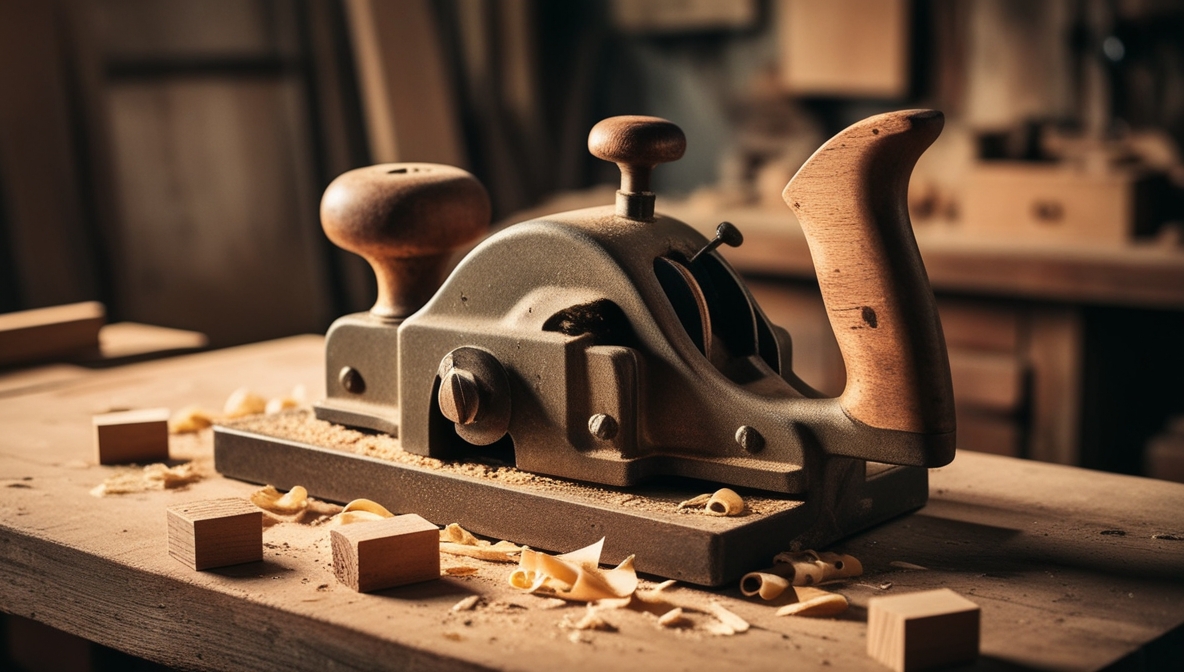Wood planer is a must-have tool for woodworking enthusiasts and professionals alike. This guide will delve into the different types of wood planers, their uses, and tips for choosing the best one for your needs.
Read about Hand Planer here!
What Is a Wood Planer?
A wood planer is a tool designed to smooth and flatten wood surfaces while adjusting their thickness. By shaving off thin layers of wood, planers ensure uniformity and enhance the wood’s appearance.
Types of Wood Planers
Several types of wood planers are available, each suited to specific tasks and preferences.
Electric Hand Planer
An electric hand planer is a portable tool perfect for quick, small-scale projects. Lightweight and easy to use, it’s ideal for trimming doors, smoothing edges, and leveling uneven surfaces.
Wood Planer Machine
A wood planer machine is a larger, stationary device often used in workshops. These machines are powerful, making them ideal for handling large pieces of lumber with precision.
Bench Planer
Bench planers, also known as thickness planers, are stationary tools designed to adjust the thickness of wood pieces. These planers are essential for creating uniformly thick boards, especially in professional woodworking.
Benefits of Using a Wood Planer
Wood planers offer several advantages, making them indispensable for woodworking projects:
- Precision
Achieve smooth, uniform surfaces with minimal effort. - Versatility
Suitable for a wide range of tasks, from leveling to shaping. - Time-Saving
Automates what would otherwise be a time-intensive manual process. - Cost-Effective
Allows you to repurpose rough or uneven lumber.
How to Use a Wood Planer
Using a wood planer effectively requires proper technique and preparation.
- Inspect the Wood
Check for nails, screws, or knots that could damage the planer blades. - Adjust the Planer Settings
Set the desired depth for the planer. For beginners, it’s best to start with a shallow cut. - Secure the Wood
Ensure the wood is clamped or supported to prevent movement during planing. - Run the Planer
Move the planer evenly across the wood, applying steady pressure for a smooth finish. - Inspect Your Work
Check the surface for uniformity and repeat the process if needed.
Choosing the Best Planer Tool
When selecting a wood planer, consider the following factors:
- Power and Performance
For large-scale projects, opt for a wood planer machine with a powerful motor. - Portability
Choose an electric hand planer for on-the-go convenience. - Budget
High-quality models, such as bench planers, often come at a higher price but deliver superior performance. - Brand and Reviews
Look for trusted brands and read reviews to ensure durability and efficiency.
Wood Shaver vs. Planer Tool
While a wood shaver and a planer tool share similar functions, they serve distinct purposes. A wood shaver is designed for smaller, finer adjustments, while a planer tool is ideal for larger surfaces and precise thickness adjustments.
Tips for Maintaining Your Wood Planer
To ensure your wood planer delivers consistent performance, follow these maintenance tips:
- Clean the Blades
Remove debris and resin build-up after each use. - Sharpen or Replace Blades
Dull blades can affect the quality of your work and damage the wood. - Lubricate Moving Parts
Apply lubricant to keep the planer running smoothly. - Store Properly
Keep the planer in a dry, clean environment to prevent rust and wear.
Advanced Uses of a Wood Planer
Wood planers can be used for more than just smoothing surfaces. Explore these advanced applications:
- Creating Custom Thickness
Adjust wood thickness to suit specific project requirements. - Shaping Wood
Use the planer to create bevels and other intricate shapes. - Repurposing Old Lumber
Revive old, rough lumber by planing it down to a fresh, smooth surface.
Best Practices for Safe Operation
Safety is paramount when using a wood planer. Follow these guidelines to prevent accidents:
- Wear Protective Gear
Use safety goggles, ear protection, and gloves to protect against flying debris, loud noise. - Secure the Work Area
Ensure the wood is firmly clamped to prevent slipping. - Follow Manufacturer Guidelines
Always adhere to the instructions provided with your planer tool.
Popular Wood Planer Brands
Several brands stand out for their quality and performance in the woodworking industry:
- DeWalt Woodworking Router
Known for its durability and precision, DeWalt offers a range of planer tools suitable for various tasks. - Jet Wood Planer
Jet planers are reliable and powerful, ideal for professional workshops. - Best Planer Models
Research reviews and comparisons to find the best planer for your specific needs.
Conclusion
A wood planer is an essential tool that elevates the quality and efficiency of woodworking projects. These tools provide the precision and versatility needed to achieve professional results. Invest in a high-quality planer, maintain it properly, and unlock its full potential to transform your woodworking experience.
